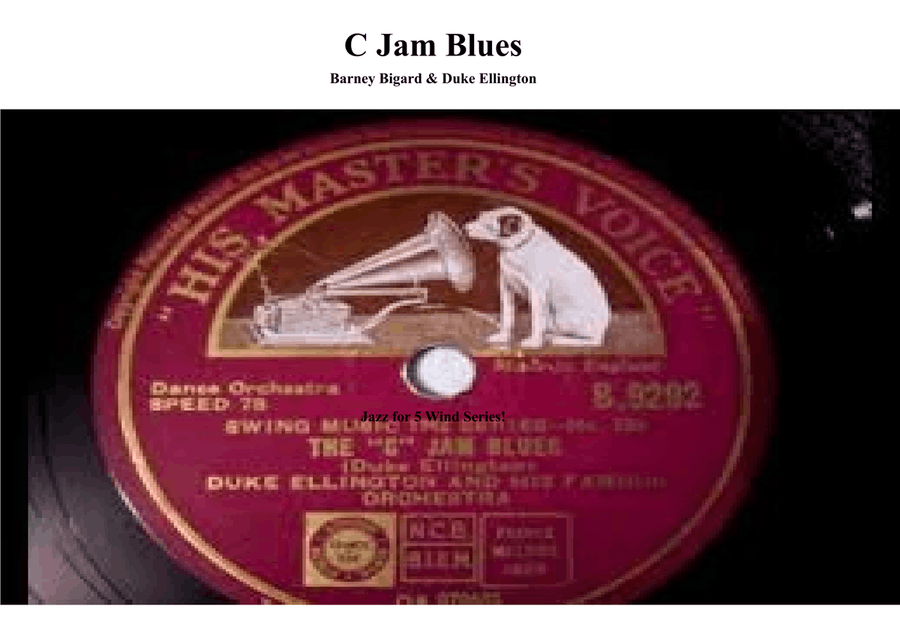Clarinet Quintet,Woodwind Ensemble Bass Clarinet,E-Flat Clarinet - Level 3 - Digital Download SKU: A0.1271363 By Duke Ellington/Barney Bigard. By Duke Ellington/Barney Bigard. Arranged by Keith Terrett. Historic,Jazz,Multicultural,Standards,World. 11 pages. Keith Terrett #863759. Published by Keith Terrett (A0.1271363). C Jam Blues is a jazz standard composed in 1942 by Duke Ellington and performed by countless other musicians, such as Dave Grusin, Django Reinhardt, Oscar Peterson, and Charles Mingus, arranged here for Clarinet Quintet.The Eb & Bb Clarinet 4 are optional.As the title suggests, the piece follows a twelve-bar blues form in the key of C major. The tune is well known for being extremely easy to play, with the entire melody featuring only two notes: G and C.A performance typically features several improvised solos. The melody likely originated from the clarinetist Barney Bigard in 1941, but its origin is not perfectly clear.It was also known as Duke's Place, with lyrics added by Bill Katts, Bob Thiele and Ruth Roberts.Ellington's black and white film was produced in 1942. The video depicts a jam session where Ellington begins playing with a double bass before gradually being joined by other members of his band, among them drummer Sonny Greer and trumpeter Rex Stewart. The film title is Jam Session. Western Swing band leader Bob Wills and His Texas Playboys recorded the song sometime between 1945 and 1947 as part of the Tiffany Transcriptions. Bill Doggett recorded a version on his 1958 tribute album Salute to Duke Ellington (King). C Jam Blues was used by the Bonzo Dog Doo-Dah Band as the basis of their song The Intro and the Outro. Mulgrew Miller and Niels-Henning Ørsted Pedersen included the song in their 1999 album The Duets. The Dave Brubeck Quartet performed this live at the 1958 Newport Jazz Festival; the recording appears in their album Newport 1958.
